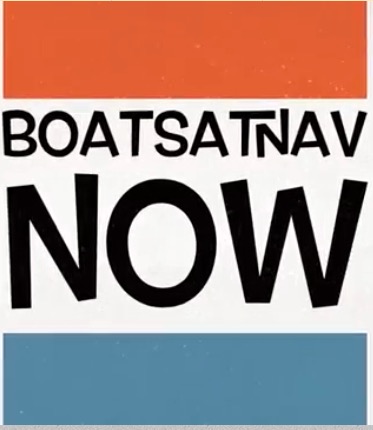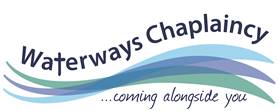6 February 2020
CANAL & RIVER TRUST TO TACKLE ‘IMPROPER’ MOORING AND MAKE WATERWAYS SAFER
The Canal & River Trust is reaching out to boaters who have moored their boats in a way that could be dangerous or cause problems for other boaters or waterway users.
The charity regularly receives feedback from boaters about craft that are poorly moored, blocking facilities, or making it unsafe for boats to navigate. The Trust is addressing the problem by promoting more considerate mooring and shared use of the waterways, letting those who are moored inappropriately know there is a problem, and ultimately acting against persistent rule-breakers.
Matthew Symonds, national boating manager at Canal & River Trust, said: “While the vast majority of boaters are considerate neighbours, every boater has a story to tell of a badly, or simply dangerously, moored boat. Whether it’s someone moored up for days on a water point, to boats blocking the sightlines on bends, there are many examples of poor mooring etiquette. This can at best be frustrating and, in some instances, can be dangerous for the moorers and others.
“So we’re going to be stepping up our efforts to contact all boats that we see moored inappropriately. Much of the time a boater may not realise that the way they’re moored may be causing a problem, and we think a polite reminder of good mooring practise will result in them moving somewhere safer, or where they won’t be affecting others.
“Being by the water makes you healthier and happy and we want everyone to be able to enjoy the waterways safely”
From Monday 10 February 2020, the new “Improper Mooring” process will be applied where a boat is moored in a way that affects safety or impedes other boaters or waterway users. It will be recorded by the Trust’s Licence Support Team and, initially, a letter will be sent to the boat owner highlighting the problem. The boater will also receive a booklet including extracts from the Trust’s boat licence terms & conditions, bye-laws, the Navigation Rules, and Boaters’ Handbook to help them understand how they can moor more appropriately.
The Trust intends the process to serve as a prompt for the boat owner to moor appropriately and to help and educate boaters that may be new to the water or unaware of the issues caused by poor mooring.
If a boater does not address their inappropriate mooring the process will allow the Trust to take action that could ultimately result in the revocation of the boater’s licence.
If, after the first letter, there are further instances of poor mooring, then the Trust will send a formal reminder which clearly sets out how T&Cs and/or byelaws have been breached, and that this could result in the termination of their licence. Should there be no resolution or a repeat of the behaviour, a second reminder will be sent, detailing the circumstances, the action the boater needs to take, and issuing a final warning. A final letter will be sent if the problem is not addressed, or if it is repeated, informing the boater of their licence being immediately suspended.
In these circumstances, the boater will be directed to remove their boat to a specific location where it must remain until investigation into the mooring conduct is concluded and they have been contacted with the outcome, which could be licence termination due to serious or persistent breach of the Trust’s terms and conditions.
The process is aimed at preventing persistent poor behaviour or serious instances and as such will focus on more acute issues. Rare or singular historic instances will be considered but the Trust hopes that the initial informative letter will help address these instances.
The Trust has identified the following examples of improper mooring, which are found in the Boaters’ Handbook, navigation rules and relevant byelaws. It is not an exhaustive list and the local environment will always be taken into account:
Mooring in a lock, lock approach, or in a lock flight; blocking services that the boater is not using; mooring near a bridge or under a fixed bridge where inappropriate; mooring near a weir; mooring near a sharp bend, on the outside of a bend, or by a blind spot; mooring in or opposite a turning point/winding hole or on the approach to it; mooring at a junction; mooring to the bank on a tidal river; mooring on a canoe landing place; mooring in a stretch marked for an angling match; mooring where there are signs that prohibit mooring.
Find out more about boating best practice in the Boater’s Handbook here: https://canalrivertrust.org.uk/enjoy-the-waterways/boating/a-guide-to-boating/boaters-handbook








































































 RCTA Linslade Easter Floating Market
RCTA Linslade Easter Floating Market RCTA Gt. Haywood Easter Floating Market - Full
RCTA Gt. Haywood Easter Floating Market - Full IWA Canalway Cavalcade 2025
IWA Canalway Cavalcade 2025 RCTA Startops May Day BH Floating Market at Marsworth
RCTA Startops May Day BH Floating Market at Marsworth Norbury Canal Festival 2025
Norbury Canal Festival 2025 RCTA Burton on Trent May Day BH Floating Market
RCTA Burton on Trent May Day BH Floating Market RCTA Willington Floating Market
RCTA Willington Floating Market RCTA Berkhamsted Floating Market
RCTA Berkhamsted Floating Market Moira Canal Festival
Moira Canal Festival The Batchworth Rally
The Batchworth Rally



Comments are closed.